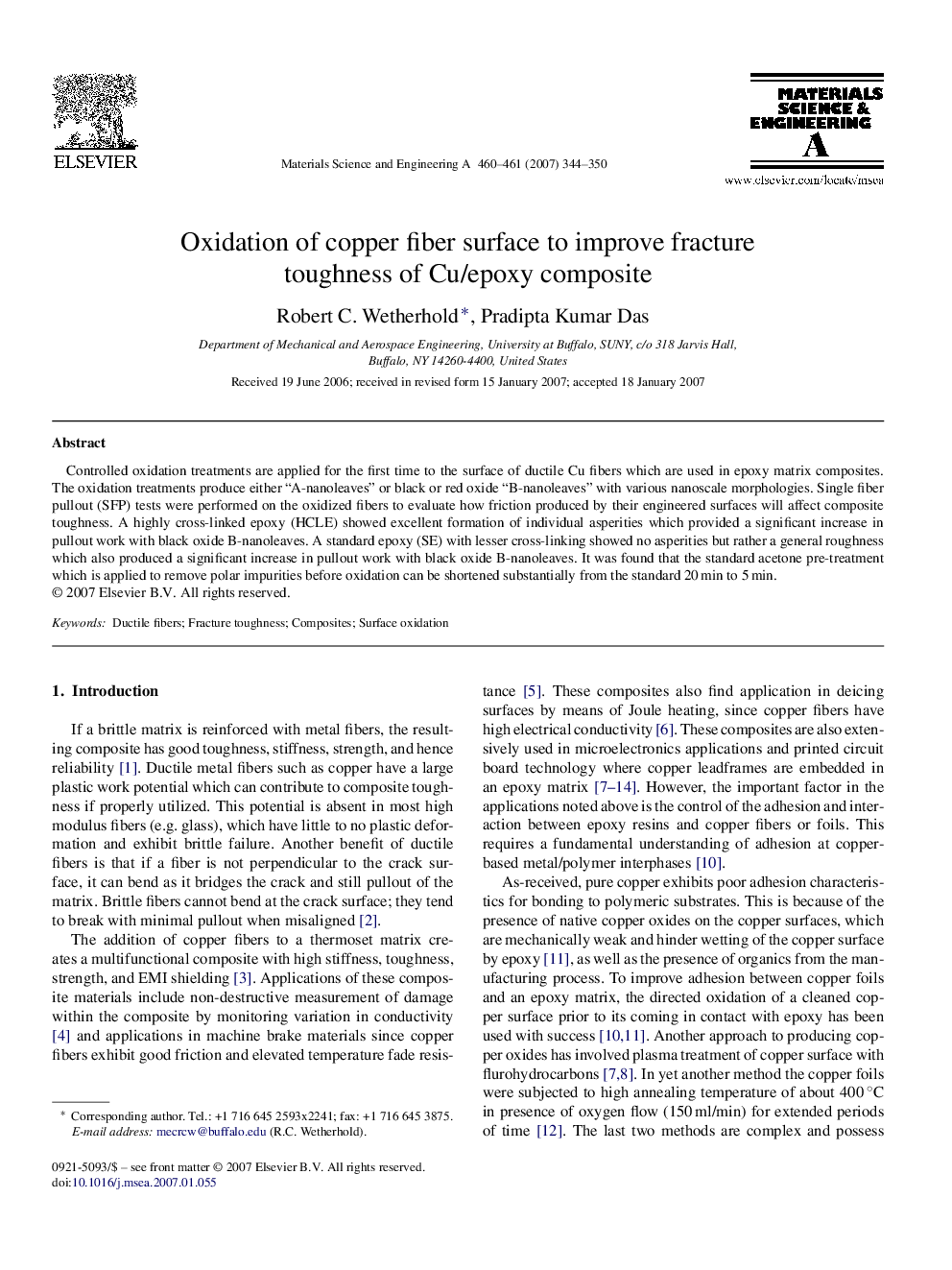| Article ID | Journal | Published Year | Pages | File Type |
|---|---|---|---|---|
| 1583583 | Materials Science and Engineering: A | 2007 | 7 Pages |
Controlled oxidation treatments are applied for the first time to the surface of ductile Cu fibers which are used in epoxy matrix composites. The oxidation treatments produce either “A-nanoleaves” or black or red oxide “B-nanoleaves” with various nanoscale morphologies. Single fiber pullout (SFP) tests were performed on the oxidized fibers to evaluate how friction produced by their engineered surfaces will affect composite toughness. A highly cross-linked epoxy (HCLE) showed excellent formation of individual asperities which provided a significant increase in pullout work with black oxide B-nanoleaves. A standard epoxy (SE) with lesser cross-linking showed no asperities but rather a general roughness which also produced a significant increase in pullout work with black oxide B-nanoleaves. It was found that the standard acetone pre-treatment which is applied to remove polar impurities before oxidation can be shortened substantially from the standard 20 min to 5 min.
